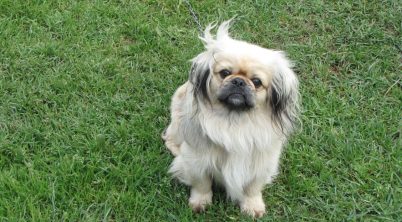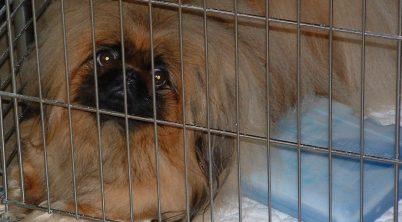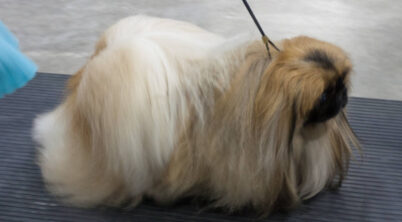The Pekingese, an ancient breed from China, particularly Beijing, carries the poise and dignity of their royal ancestry. Cherished as a companion dog in the Chinese Imperial Court, they were an exclusive breed not available to the common people. Known for their distinctive flat faces, lion-like mane, and compact bodies, these dogs are marked by a particular charm that makes them beloved pets. Perhaps one of the most endearing traits of the Pekingese is their expressive behavior, especially when they are asking for something they want.
Pekingese have a reputation for being both strong-willed and affectionate, traits that often come into play when they seek attention or treats from their owners. Their large, soulful eyes can soften the hardest of hearts, making it difficult for many owners to resist their requests. This “begging” behavior is not just limited to seeking food—it can also be a way for these small dogs to engage in interaction and secure the companionship they were bred for.
Begging in Pekingese, as with any behavior in dogs, should be managed with care. Positive reinforcement techniques can help shape this behavior in a way that is healthy and not disruptive. Training them with gentle, but firm commands can help establish boundaries while allowing their personalities to shine through. While they may have a predisposition for persistent begging due to their history as pampered dogs of royalty, with proper training, they can also learn to express their desires in ways that are both playful and polite.
Table of Contents
Pekingese Begging
The Pekingese breed has a storied history, with deep connections to Chinese nobility. This dignified past, however, does not make them immune to the common canine behavior of begging for food. Their endearing expressions and persistent presence whenever food is around can be quite persuasive. Owners often find a Pekingese’s large, expressive eyes hard to resist when they’re silently pleading for a taste of what’s on the table.
Training to mitigate begging behaviors should begin early. A Pekingese can be taught basic commands such as “sit” to instill discipline. During meal times, it’s advisable to:
- Avoid direct eye contact: This discourages the dog from engaging in the behavior.
- Provide a distraction: A toy or a puzzle with treats can keep them occupied.
- Be consistent: Family members should agree to not feed them from the table.
Owners may observe their Pekingese:
- Staying close by in the kitchen.
- Watching intently with a head tilt or paw gestures.
- Making soft noises to draw attention.
Despite their tactics, it is important to maintain a healthy diet for the Pekingese, avoiding human food that could cause harm or lead to obesity. Begging should not be reinforced with treats, as it can become a habit difficult to break.
Videos and photos online, such as those with Pekingese begging for watermelon, showcase their determination and clever techniques. These visuals can be entertaining but also serve as a reminder of the importance of firm yet gentle training to maintain the well-being of these dignified companions.
Socialization and Lifestyle
Socialization and lifestyle are pivotal for the Pekingese’s well-being, helping mitigate anxiety and establishing a contented life through interaction, activities, and understanding behavior.
Interaction with Pets and People
Pekingese are known for their affectionate nature towards their human companions, thriving on attention which reinforces their bond. Socialization should start early, as it can prevent the development of anxiety and improve their temperament when traveling or encountering new situations. It is important for pet owners to gradually expose their Pekingese to various people and pets, ensuring positive experiences to enhance their sociability.
- Early Socialization: Introduce to a variety of people and animals
- Positive Reinforcement: Use treats and praise to reward good behavior
- Regular Exposure: Frequent, controlled encounters to build confidence
Activities and Enrichment
Given the Pekingese’s relatively short lifespan, enriching their life with tailored exercise and mental stimulation is crucial. This breed requires moderate exercise, which could be split into two shorter daily sessions. Enrichment activities should be designed to be engaging and not overly strenuous, to match their physical capabilities.
- Exercise Needs: 30 minutes to an hour per day, split for comfort
- Playful Activities: Short walks, playtime, and interactive toys
Understanding Behavior
Neutering can play a role in tempering certain behaviors of the Pekingese. Recognizing the signs of discomfort or stress is essential, allowing pet owners to adjust socialization and activities accordingly. A Pekingese typically displays loyalty and a desire for closeness with their owner, which are behaviors indicative of their companion dog heritage.
- Stress Signals: Monitor for signs of stress to prevent anxiety
- Companion Traits: Loyalty and affection as core behaviors
Each aspect of the Pekingese’s socialization and lifestyle needs to be approached with patience and understanding, always considering their unique requirements and predispositions.
* Banner by ccho, cropped | Some rights reserved








